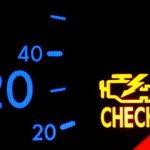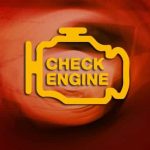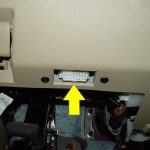In the world of automotive technology, “OBD11” is a term that often sparks curiosity and confusion among car owners. While it may seem like a complex technical jargon, understanding OBD11 can empower you to take control of your vehicle’s health and performance. This comprehensive guide will unravel the mysteries surrounding OBD11, exploring its features, benefits, and practical applications for both everyday drivers and automotive enthusiasts.
OBD11 for Beginners
If you’re new to the world of OBD11 and car diagnostics, don’t worry! It’s easier to understand than you might think. OBD11, often stylized as OBD-II or OBD2, simply stands for On-Board Diagnostics. It’s a standardized system that has been implemented in vehicles since 1996. Think of it as your car’s built-in health monitoring system. It continuously checks various components and systems to ensure everything is running smoothly.
When the system detects a potential issue, it triggers the check engine light on your dashboard. This light can illuminate in different ways, depending on the severity of the problem. A steady light usually indicates a minor issue, while a flashing light suggests a more urgent problem that requires immediate attention. Sometimes, the light may only illuminate under specific circumstances, such as when the engine is under heavy load. Regardless of how the light appears, it’s crucial to address the underlying issue promptly to prevent further damage and ensure your safety.
What is OBD11 and How Does it Work?
OBD11 acts as a central computer within your car, continuously monitoring various components and systems to ensure optimal functionality. It achieves this through a network of sensors strategically placed throughout your vehicle. These sensors gather crucial data, such as engine speed, coolant temperature, and oxygen levels, which are then transmitted to the Engine Control Unit (ECU). The ECU, often referred to as the “brain” of your car, analyzes this data and compares it to predefined parameters. If any discrepancies are detected, the system generates Diagnostic Trouble Codes (DTCs), which are stored in the ECU’s memory.
To access and interpret these codes, you need an OBD11 scanner. This device connects to the standardized OBD-II connector, defined by the J1962 standard. This connector typically has 16 pins, each with a specific function, allowing the scanner to communicate with the vehicle’s ECU. The location of the OBD-II port can vary slightly depending on the vehicle, but it’s usually found under the dashboard on the driver’s side.
OBD11 utilizes different communication protocols to transmit data between the ECU and the scanner. These protocols include J1850 PWM, J1850 VPW, ISO9141-2, ISO14230-4, and ISO15765-4. The specific protocol used depends on the vehicle’s make and model.
The OBD11 system also incorporates “enable criteria” and “trip” logic to determine when to run specific tests and store DTCs. Enable criteria refer to specific engine and driving conditions that must be met for a particular test to run. For example, a catalyst monitor test might require the engine to be warmed up and the vehicle to be driven at a certain speed for a specific duration. A trip, in OBD11 terms, refers to a key-on engine-off or key-on engine-running condition, followed by a key-off event. The OBD11 system uses this trip logic to track driving cycles and ensure that tests are conducted under appropriate conditions.
OBD11 provides access to 10 standard modes of data, each offering different types of information. These modes include:
- Mode 1: Provides current powertrain diagnostic data, such as engine RPM, coolant temperature, and vehicle speed.
- Mode 2: Displays freeze frame data, which captures vehicle parameters at the time a fault occurred.
- Mode 3: Retrieves emission-related DTCs.
- Mode 4: Clears/resets emission-related diagnostic data.
- Mode 5: Displays oxygen sensor monitoring test results.
- Mode 6: Shows specific diagnostic monitored system test results.
- Mode 7: Displays emission-related DTCs detected during the current or last completed driving cycle (pending codes).
- Mode 8: Allows for onboard system activation tests.
- Mode 9: Provides vehicle information, such as VIN and calibration ID.
- Mode A: Displays emission-related DTCs with permanent status.
Types of Car Scanners and Their Functionalities
Car scanners, also known as OBD11 scanners, are essential tools for diagnosing and troubleshooting vehicle issues. They provide valuable insights into the inner workings of your car, enabling you to identify and address problems effectively. Here are some common types of car scanners and their functionalities:
| Scanner Type | Functionalities |
|---|---|
| Engine Code Readers | Retrieve and clear engine-related trouble codes. Affordable and suitable for basic diagnostics. |
| Bluetooth/WiFi OBD11 Scanners | Connect wirelessly to smartphones or tablets. Access real-time data, diagnose problems, and monitor vehicle parameters. |
| OBD11 Gauges and Monitors | Display real-time data in the form of gauges. Provide visual representation of temperature, pressure, speed, and fuel consumption. |
| Multi-System OBD11 Scan Tools | Diagnose multiple systems, including ABS, SRS, transmission, and body electronics. Offer broader diagnostic capabilities. |
| Professional OBD11 Scan Tools | Provide comprehensive diagnostics, including bi-directional control, ECU coding, and programming. Used by professional mechanics and workshops. |
| Dealership Diagnostic Tools | Access manufacturer-specific databases and servers. Perform advanced diagnostics, firmware upgrades, and factory resets. |
Benefits of Using OBD11 Scanners
Utilizing an OBD11 scanner offers numerous benefits for car owners, including:
- Early Problem Detection: Imagine catching a faulty oxygen sensor before it damages your catalytic converter, potentially saving you hundreds of dollars in repairs. By regularly scanning your vehicle with an OBD11 scanner, you can identify potential issues before they escalate into major problems. This proactive approach can save you time, money, and frustration in the long run.
- Improved Fuel Efficiency: With rising fuel costs, optimizing your vehicle’s fuel economy is more important than ever. OBD11 scanners can help you monitor fuel consumption and identify factors that may be affecting your vehicle’s efficiency. By analyzing data such as engine load, air/fuel ratio, and throttle position, you can identify areas for improvement and adjust your driving habits to maximize fuel efficiency.
- Enhanced Performance: OBD11 scanners provide access to live data, allowing you to monitor various engine parameters in real-time. This data can help you identify areas for performance improvement and fine-tune your car for a smoother and more efficient driving experience. For example, you can monitor ignition timing, air intake, and exhaust gas recirculation to optimize engine performance and responsiveness.
- Reduced Maintenance Costs: Proactive maintenance is key to keeping your car running smoothly and minimizing repair costs. OBD11 scanners enable you to identify potential problems early on, allowing you to address them before they cause more serious damage. This can help you avoid costly repairs and extend the lifespan of your vehicle.
- Increased Resale Value: When it comes time to sell your car, a well-documented vehicle history can significantly increase its resale value. Regularly scanning your vehicle with an OBD11 scanner and keeping records of the results demonstrates proactive maintenance and care, giving potential buyers confidence in the vehicle’s condition. Some advanced scanners even allow you to store vehicle history data, providing a comprehensive record of maintenance and repairs.
Advanced OBD11 Features
Advanced OBD11 scanners offer a range of features that go beyond basic diagnostics, providing more in-depth insights and customization options. These features can be broadly categorized into:
System Testing and Calibration
- Bi-Directional Control and Active Tests: This functionality enables you to send commands to your vehicle’s systems to perform specific functions, such as activating the fuel pump or cycling the ABS pump. This allows you to test components and diagnose problems accurately, eliminating guesswork and ensuring efficient repairs.
- Advanced Adaptation Procedures: This feature is essential when replacing parts like the throttle body or transmission. It allows you to reset learned values and calibrate new components to ensure optimal performance and prevent issues like rough idling or stalling.
Component-Specific Functions
- Injector Coding: When replacing fuel injectors, injector coding ensures that the ECU recognizes the unique flow characteristics of each injector. This process optimizes engine efficiency, reduces emissions, and ensures smooth engine operation.
- DPF Regeneration: This feature is particularly useful for diesel vehicles. It forces the vehicle to burn off accumulated soot in the Diesel Particulate Filter (DPF), restoring its efficiency and preventing performance issues.
Safety System Diagnostics
- ABS and SRS Diagnosis: Advanced scanners can diagnose issues related to the Anti-lock Braking System (ABS) and Supplemental Restraint System (SRS). This ensures the proper functioning of these critical safety systems, providing peace of mind and enhancing safety on the road.
Battery Management
- Battery Management System (BMS) Reset: After replacing the battery, this feature allows you to reset the BMS, ensuring accurate monitoring and optimal battery performance. This can help extend the lifespan of your battery and prevent issues related to battery management.
Diagnostic Sessions
OBD11 also supports different types of diagnostic sessions, catering to various needs and functionalities. These sessions include:
- Default Diagnostic Session: This is the standard session used for basic diagnostics and retrieving information.
- Programming Session: This session is used for reprogramming the ECU or other control modules.
- Extended Diagnostic Session: This session provides access to more advanced diagnostic functions and data.
- Safety System Diagnostic Session: This session is specifically designed for diagnosing safety-related systems.
A History of OBD: From OBD-I to OBD11
The development of On-Board Diagnostics can be traced back to the early 1980s when automakers began incorporating rudimentary diagnostic systems in vehicles. These early systems, known as OBD-I, primarily focused on monitoring emissions and were not standardized across different manufacturers.
In the early 1990s, the need for a more comprehensive and standardized diagnostic system led to the development of OBD11. This second generation of OBD introduced several key improvements, including:
- Standardized Connector: OBD11 mandated a universal connector, the J1962 connector, allowing for easier access to vehicle data.
- Expanded System Monitoring: OBD11 expanded the scope of system monitoring beyond emissions, including other critical components like the engine, transmission, and safety systems.
- Standardized Trouble Codes: OBD11 standardized DTCs, making it easier to diagnose problems across different vehicle makes and models.
OBD11 vs. Other Diagnostic Systems
While OBD11 is the most widely used diagnostic system in the United States, other regional and international standards exist. These include:
- EOBD (European On-Board Diagnostics): EOBD is similar to OBD11 but is specifically designed for vehicles sold in Europe. It incorporates some minor differences in emissions standards and diagnostic procedures.
- WWH-OBD (World Wide Harmonized On-Board Diagnostics): WWH-OBD is an international standard developed by the United Nations. It aims to harmonize OBD regulations globally, promoting consistency and interoperability across different regions.
Key Insights and Considerations
While OBD11 offers a standardized approach to vehicle diagnostics, it’s important to keep in mind some key insights:
- Standardized and Manufacturer-Specific Codes: OBD11 codes can be both standardized and manufacturer-specific. Generic codes provide a general understanding of the issue, while manufacturer-specific codes offer more detailed information. Therefore, it’s beneficial to use scanners that can access both types of codes for comprehensive diagnostics.
- Subscription Plans and Features: Some OBD11 scanners, like OBDeleven, offer different subscription plans with varying features. These plans cater to different user needs and skill levels, from basic code reading to advanced coding and adaptations. Choose the plan that best suits your requirements and technical expertise.
- Customization and Personalization: OBD11 scanners can be used to activate or deactivate certain vehicle features, allowing for customization and personalization. For example, you can modify settings related to tire pressure display, automatic locking, daytime running lights, and more. However, it’s essential to research specific modifications before attempting them, as some may require manual coding or adaptation, especially in newer car models.
Conclusion
OBD11 is a powerful system that has revolutionized vehicle diagnostics and maintenance. By understanding how OBD11 works and utilizing the right tools, you can take control of your car’s health, diagnose problems effectively, and optimize its performance. Whether you’re an everyday driver or an automotive enthusiast, OBD11 empowers you to become a more informed and proactive car owner.
When choosing an OBD11 scanner, consider your needs and technical expertise. Basic code readers are suitable for checking and clearing engine codes, while advanced scanners offer more comprehensive diagnostics and customization options. Some scanners, like the TOAD scanner, provide professional-grade diagnostics, ECU tuning capabilities, and extensive data analysis features, making them ideal for both car enthusiasts and professional mechanics. With the right OBD11 scanner, you can unlock a deeper understanding of your vehicle and ensure its optimal performance for years to come.





